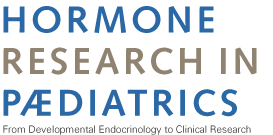
January 2013: Adult height prediction for short children
Hormone Research in Pædiatrics brings a new article on prediction of adult height of short children using manual methods and BoneXpert.
Adult height prediction methods are conventionally developed to be valid for normal children. It is then hoped that the method is also accurate for children outside the normal range, as long as these are non-pathological and untreated. From a clinical perspective, the most important such patient group is apparently healthy children with short stature. When they present in the clinic, it is common routine to perform a bone age assessment and predict the adult height as a first step in the work up, but the use of manual bone age rating and the classical Bayley Pinneau (BP) method is not optimal. The paper shows that for the short children, the BoneXpert method is indeed significantly better.
The 190 subjects born between 1970 and 1990 were seen in the Tubingen clinic, but never treated. These children have idiopathic short stature in the broad sense, including familial short stature and constitutional delay of growth and puberty. The paper compares four approaches to bone age (BA) assessment and adult height prediction (AHP), here listed in order of accuracy in these children:
- Manual BA + Bayley Pinneau AHP
- Manual BA + BoneXpert AHP
- BoneXpert BA + BoneXpert AHP
- BoneXpert BA + BoneXpert AHP including parental height
The adoption of the BoneXpert method can thus make this important diagnostic procedure more efficient and reliable. A reference to the paper is found on this page.
